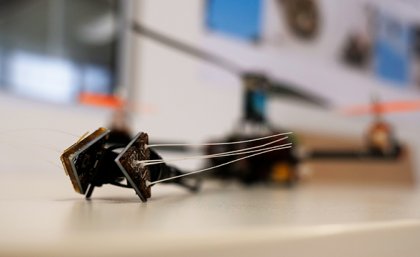
A University of Queensland engineer has followed nature’s example and developed whiskers for drones and robots, allowing machines to sense surroundings just as animals do.
Dr Pauline Pounds said her team wanted to build affordable sensors to help robots work with peripersonal space – the region immediately around but not touching a person.
“Whether it’s a humanoid teaching robot in the classroom or hovering drones in flight, being able to sense interactions before contact is important,” Dr Pounds said.
The whiskers are extremely sensitive and can detect minute forces such as from the motion of air, even able to measure human breath from half a metre away.
This allows smaller drones to navigate and stabilise flight through dark, dusty, smoky, cramped spaces, or gusty, turbulent environments without having to mount heavier sensors.
“The whiskers are long slender fibre ‘hairs’ made from the same plastic material that 3D printer extruders use,” she said.
“They are attached to small force-transmitting plates that are glued onto a miniature tripod of pressure sensors, which can then detect tip loads as low as 0.33 milligrams – less than the weight of a flea.”
Dr Pounds said the assembly of the hardware was simple and affordable, with the total cost coming to $30.
“They can be used to measure fluid velocity, as well as to detect the bow-wave of oncoming air of an approaching object before it actually touches the whiskers,” Dr Pounds said.
“You can use the whiskers anywhere you want to measure force, like in machining applications, in industrial fabrication, in medicine, in marine systems, in aerospace – the possibilities are endless.”
The first application of the whiskers was on a robot rat called iRat, used to help the study of rodent psychology and neurology.
Media: Associate Professor Pauline Pounds, pauline.pounds@uq.edu.au, 0416 238 326; EAIT Communications, Paige Ashby, p.ashby@uq.edu.au, 0430 511 615.
.jpg)










